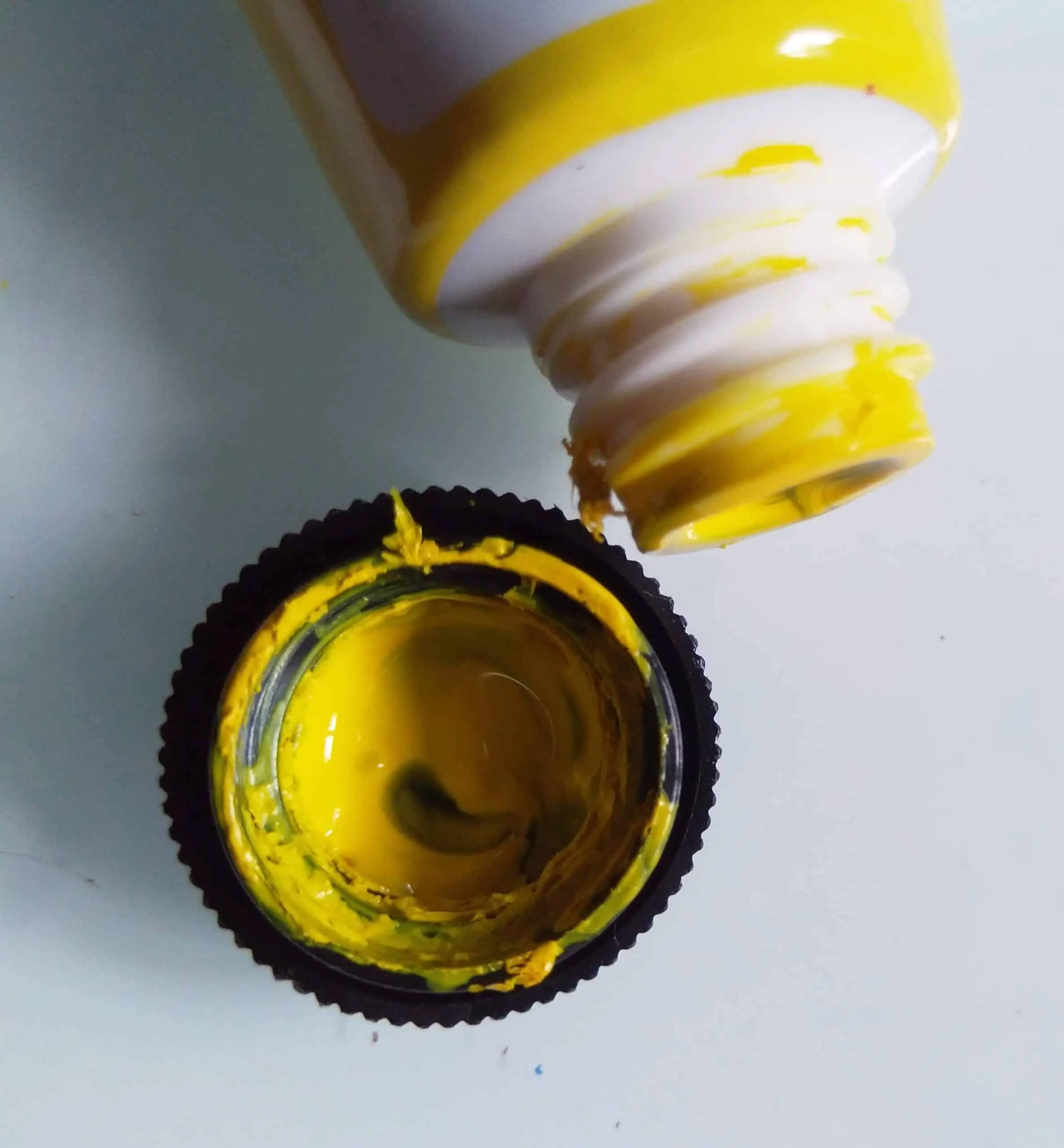Recently I thought of buying a bunch of acrylic paints and wondered how long they will last. So I have done a little research by contacting several manufacturers about the shelf life of acrylic paints they produce. Here is what I have found on how long acrylic paint last.
In general most high-quality acrylic paint brands last for 6 or more years unopened. Other acrylic paints last for 2 years in general. Maintaining proper storage conditions, limiting exposure to air, and reducing the chance of contamination ensure the longevity of acrylic paint.
Although manufacturers have an official shelf life, it depends on many other factors such as proper storage conditions. If these factors are not controlled acrylic paint will not last as mentioned in the official shelf life. These factors will be further discussed in the article.
How long does acrylic paint stay good for?
On average acrylic paint stays good for 4 years or longer if kept in optimal storage conditions such as avoiding too hot or cold environments. Unopened acrylic paints last longer than opened acrylic paints because opened acrylic paints are prone to contamination and exposure to air.
I have emailed or looked up the websites of several big acrylic brands and got their opinion on the shelf life of acrylic paint. The official shelf life of acrylic paints that are properly stored, in the packaging provided is mentioned below. The shelf life is measured from the date of manufacture.
| Acrylic paint brand | Official shelf life (unopened) | Notes |
| Golden | Many years | Do not have any shelf life parameters as they can last for many years if kept properly |
| Liquitex | 5 – 7 years | With proper storage conditions at room temperature, free of contaminants, and tight capping to block air |
| Winsor & Newton | 7 – 10 years | After opening use shortly, shelf life can vary greatly depending on how the products are packaged and stored |
| Daler Rowney | 5 years | With proper storage conditions, avoid freezing or close to freezing conditions |
| Utrecht | 2 years | After two years, more prone to getting contaminated |
| Blick Art Materials | 2 years | 1-year warranty from the purchase date but last longer than that, After two years prone to getting contaminated |
| Arteza | 1.5 years | But should last for 2 – 5 years under optimal conditions |
| Chroma Atelier | 5 years | Many will work and stay “fresh” much longer than that |
| Pebeo | 5 years | Once opened, acrylic paint can be stored for six months, tightly closed in its original packaging and under normal conditions |
The average shelf life of all acrylic paints comes down to 3.6 years in optimal conditions, where paints are unopened and stored properly. It can be taken as an average of 4 years. This shelf life is given from the date of paint was manufactured and not from the date you purchased the acrylic paint.
High-quality acrylic paint brands such as Winsor & Newton, Liquitex, Daler Rowney, and Chroma Atelier have an average shelf life of 6 years. Other acrylic paint brands such as Utrecht, Blick Art Materials, and Arteza have an average shelf life of 2 years.
The official shelf life values are only valid when the products are stored under normal conditions. These normal conditions are products being stored in their original unopened packaging, ideally at temperatures around 23°C and in no case below 0°C and above 40°C, and without direct exposure to sunlight.
Winsor and Newton’s acrylic products don’t have expiration dates because the shelf life can vary greatly depending on how the products are packaged and stored. The average shelf life is 7-10 years unopened. Once acrylics have been opened they should be used within a relatively short period of time.
-Daniel de la Fuente, Winsor & Newton Support Team
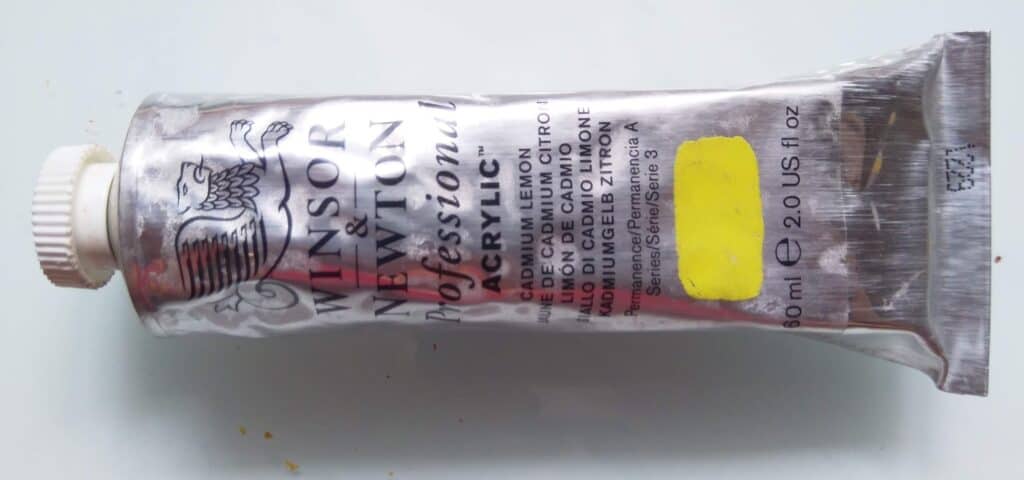
However, the most renowned acrylic paint brand Golden generally does not have any shelf life parameters as they can last for many years if kept properly.
The shelf life comes from the preservative used in acrylic paints. The reason why shelf life varies with different brands is due to the preservative used in paints. When the preservation is good acrylic paint will last longer.
As an example, Blick Art acrylics and Utrecht acrylic paints have the same preservative in them. Thus they have the same shelf life of 2 years.
I have written an article series about common acrylic paint questions and answers: part 1 and part 2. You can find answers to questions like this in the articles even before you face them.
How long do acrylic paints last once opened?
After opening acrylic paint can last a relatively short period compared to the official shelf life. This is due to bad storage conditions, contamination, exposure to air, and temperature fluctuations. If these factors are controlled well acrylic paint last long as the shelf life mentioned.
Even though these factors went wrong, the preservative in the acrylic paint can hold the paint from going bad. Blick Art Materials said they give a warranty for acrylic paints for 1 year. This means the paint will be just fine for up to 1 year if not subjected to extreme conditions such as extreme freezing or hot temperatures.
Do acrylic paints go bad?
Acrylic paint can go bad, especially after ending the shelf life period or before. If the paint is subjected to frequent freezing temperatures, exposure to air, and contaminations of mold and yeast, it goes bad. Avoid freezing temperatures and too hot temperatures.
After even before ending the shelf life of acrylic paints, they are prone to go bad due to several factors. You can know if the acrylic paint has gone bad by checking the below signs.
- Hardened acrylic paint, especially old tubes of paint
- Chunky paints, these chunks cannot be smoothed out, which happen due to high heat or exposure to air
- Fluid separation of paint usually happens when freezing, and can be fixed by mixing paint and fluid
- Musty or sour odor of paint, an indication of mold growth, have to discard paint
I have written a whole article on ‘Can You Use Expired Acrylic Paint? (Pros and Cons Included)‘. Using the information in the article you can make an informed decision on whether to use expired acrylic paint or not.
What makes acrylic paint go bad?
Below I have explained the factors that make acrylic paint go bad in detail. I have also written a whole article about ‘How can you tell if acrylic paint is bad?‘. You can find the common signs of bad acrylic paint, and how to fix and prevent them in that article.
Contamination promotes microbe growth on acrylic paint
Once you have started using acrylic paints, contaminations can happen. There are different sources of contamination. This can happen through the tap water, brush, and palette knife you are using.
Tap water is not the purest form of water. It can have microbes. When tap water lies with acrylic paint for a long period, mold and bacteria growth can happen. You can see mold growth especially if using acrylic paint jars or tubs with wide openings.
Also if you are using a stay-wet palette to keep acrylic paint wet, you might see mold growth on the paint. This especially happens if you left acrylic paint on the stay-wet palette for a long time.
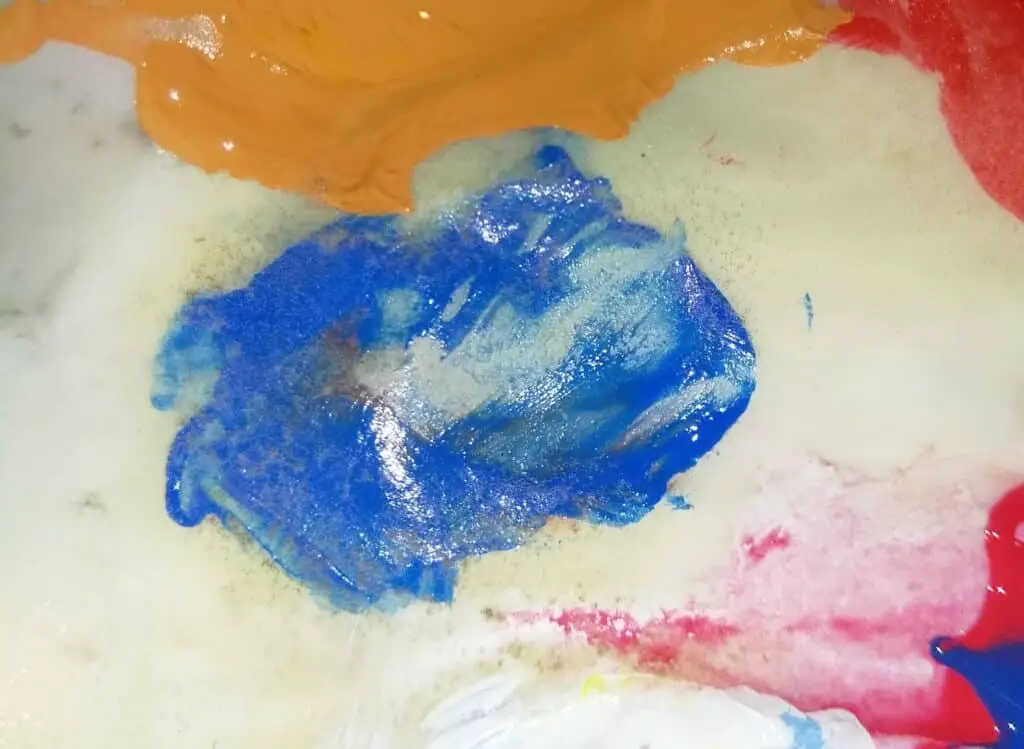
Contamination also happens when you put a palette knife or brush directly into the paint container, or scoop unused paints back into the container. These painting tools can often harbor small amounts of bacteria, which reproduce easily inside the container after the preservative has expired. Thus making a strong odor and unusable paints.
Freezing or high temperatures deform acrylic paint
Freezing acrylic paints repeatedly or keeping them over 90°F for extended periods reduces their shelf life. Freezing can cause acrylic paint components to separate. You will see this separation as a liquid sitting on top of the acrylic paint in the tube.
If you kept the paint in high heat the paint will become chunky. The paint will dry faster and form clots inside the paint tube. This can happen when you are painting outside in high heat. Paint inside the tubes can get all chunky and unusable.
Continuous exposure to air dries acrylic paint
Continuous exposure to air rapidly dries the acrylic paint into chunks making acrylic paint unusable quickly.
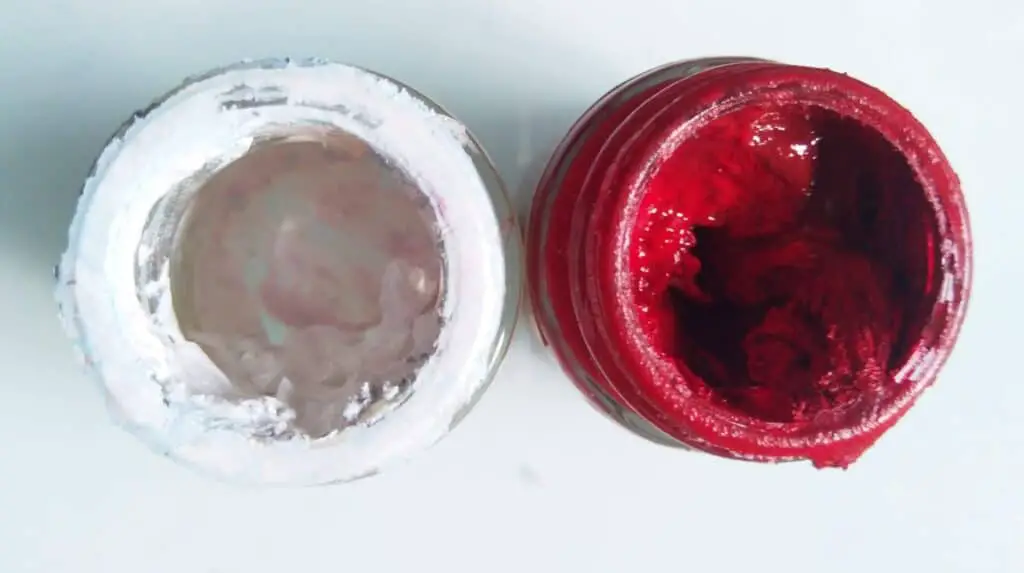
However, the level of air exposure can contribute to reducing acrylic paint shelf life. Tube acrylic colors with a small hole for squeezing out color will get much less air exposure than a wide-mouth jar of the medium that has been opened and partially used.
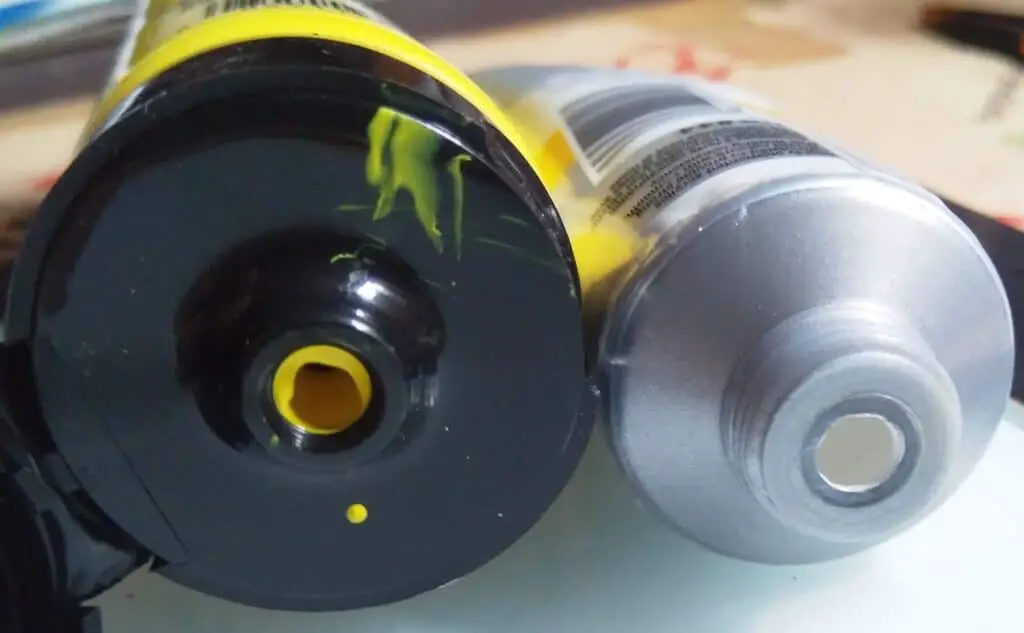
Keeping the air off of acrylic paint is the key to longevity. Tubes are great for this, but the jars are not.
Sometimes dry acrylic paint is better as a disposal method. If you are interested in using acrylic paint in an eco-friendly way, you can read my article; Alternative for Acrylic Paint: Best Eco-Friendly Solution.
How can I make acrylic paint last longer?
You can make acrylic paint last longer by controlling the factors that contribute to its shelf life, which are mentioned above. Below I have included details on how you can make acrylic paint last longer.
Maintain proper storage conditions
Proper storage conditions are key to the longevity of acrylic paint. Store acrylic paint in a cool, dry place away from direct sunlight. This place should not be subjected to frequent freezing or over 90°F for extended periods as well.
“We generally do not have any shelf life parameters for our products as they can last for many years if kept properly. This means if the caps and threads of the tubes are kept clean and the caps screwed on firmly, the lids on the containers are also kept on when not in use. And if the products are kept at temperatures that are not too cold and not too hot. Then they should last quite a long time.”
-Scott Bennett, Materials Specialist at GoldenPaints.com
Limit chances for contamination
Painting tools contribute to contamination. Thus it is important to keep them clean. As brushes have a lot of bristles, there is plenty of room for microbes to live. In this case, a palette knife is a better choice when mixings well as taking paint out of tubes, jars, or tubs.
However even though you clean the palette knife with water and wipe it with a paper towel, there can still be microbes. This can be eliminated by wiping a palette knife with an alcohol wipe real quickly.
Reduce exposure to air to increase longevity
Air is the number 1 cause that makes acrylic paint go bad. You need to minimize the paint exposure to air as much as possible. To do this close the paint caps properly and tightly. The lids or caps of the paint container should be air-tight.
However, when there is paint around the caps, they will not close properly. Arteza Acrylic Paints recommend rinsing off the caps before closing each paint tube.
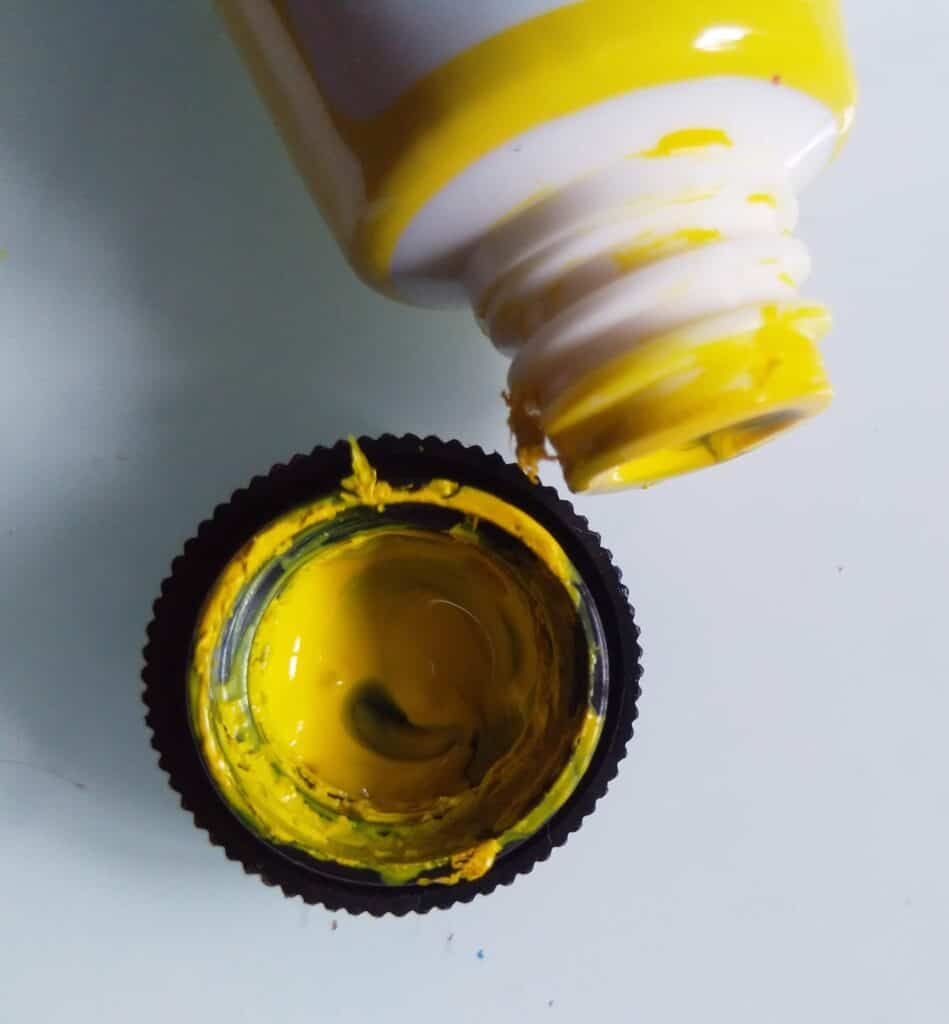
Paint tubes have less exposure to air while tubs or jars have large openings and more air exposure. When using the jars of paint, if you need to store them for an extended period it’s best to push some plastic wrap into the jar above the paint so they are exposed to less air. The more paint you use out of the jar, the more important that is.
The best paint tubes to use would be metal ones. Most artist-grade acrylic paint tubes are made from metals like Golden and Winsor & Newton. This is because plastic paint tubes can trap air inside because they tend to spring back after squeezing paint out. Metal tubes stay compressed after squeezing not letting air trap inside.
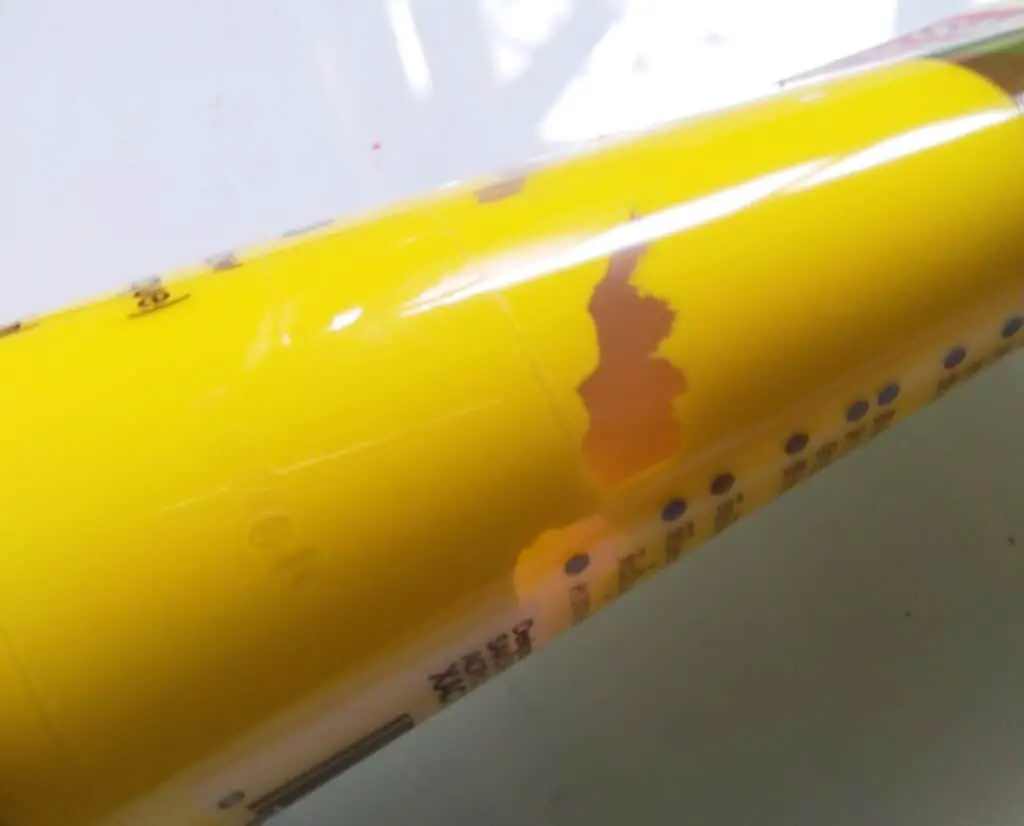
I have written a whole article about the 11 best ways of saving acrylic paint for reusing. Preventing acrylic paint from going bad is one of them. You will find tips and tricks to save acrylic paint and money at the same time there.
How to protect acrylic paintings from going bad?
It is very important that you make your paint last longer. But it is really important to ensure the longevity of the paintings you are doing. Otherwise, they can be destroyed and all your hard work will be for nothing.
One of the best ways to ensure your paintings last long is by varnishing the finished painting. It will protect the artwork from collecting dust and dirt. You can use either a brush-on or a spray varnish, depending on the surface and texture of your piece.
How to varnish the painting?
Below I have included steps on how you can varnish the painting to protect it.
Step 1: Decide what kind of finish would be appropriate, such as matte, semi-gloss, gloss, or high-gloss.
Step 2: After the painting has thoroughly dried for 1 – 2 weeks in general, use 2 coats of quality spray varnish on it such as Krylon Crystal Clear acrylic coating. Read the varnish can’s instructions on the ideal room temperature range to use it in, as well as the expected dry time.
Spray one coat on the painting, starting from off the painting at left then proceed to the right and go off the painting. Do this in a zig-zag pattern until the entire painting has been sprayed. Let dry thoroughly.
Step 3: Now turn the painting to 90° and repeat the same procedure and let dry thoroughly.
Step 4: After this last layer of varnish has dried thoroughly, you can then have the painting mounted in the frame behind the glass, and I would recommend the UV-clear glass to protect the painting from fading.
On a related note, when you go to hang or display your painting, avoid placing it in areas where it will receive a great deal of sunlight and/or heat.
I have written a whole article about the 17 pros and cons of acrylic paint. You can find all the important aspects of acrylic paint there.
The durability of acrylic paint on different materials
The durability of acrylic paint on different materials or surfaces changes. Some surfaces are made for acrylic painting like canvas and it is easier to work on them. There are some unusual surfaces for painting like glass and plastic which needs extra work.
Below I have included the expected durability of acrylic paint on different materials.
How long does acrylic paint last on clothes?
Acrylic paint is permanent on cloth or fabric. First, remove the sizing of the fabric by pre-washing, apply the paint, and wait for at least 4 days before washing for the paint to cure. Hand washing and hanging dry is the best way to ensure the durability of the artwork on cloth.
I have written a whole article on ‘How long acrylic paint to cure? (Comprehensive answer)‘. You will learn more about curing, even the process acrylic paint goes through to dry and cure.
How long does acrylic paint last on plastic?
Acrylic paint is permanent on plastic with proper surface preparation and sealing of paint. As plastic is rigid and smooth, first sand the surface and apply 2 coats of an industrial water-based primer. Sand between each coat. apply acrylic paint and let it cure for 1 week and seal with a clear coating.
I have written a whole article about how to stick acrylic paint on plastic. You will find different ways of sticking acrylic paint on plastic there.
How long does acrylic paint last on wood?
Acrylic paint is permanent on MDO (Medium Density Overlay) plywood. Prepare the surface by sanding the wood and applying 2 -5 coats of gesso. Then apply acrylic paint and let it cure for 1-2 weeks. Finish acrylic painting with a clear coating. Let it dry thoroughly.
How long does acrylic paint last on metal?
Acrylic paint is permanent on metal if primed with a water-based industrial metal primer, sealed, and let the paint fully cure for 2 weeks. When painting lightly sands the industrial primer and apply gesso. Then paint over and let it cure for 3 days before sealing the painting.
I have written a whole article about how to stick acrylic paint on metal. You will find different ways of sticking acrylic paint on metal there.
How long does acrylic paint last on shoes?
Acrylic paint lasts long on canvas shoes but may not be permanent for a long time. Because shoes are subjected to dirt, mud, sunlight as well as moisture. Leather shoes can be painted with acrylics after sanding and degreasing with rubbing alcohol. Finish by sealing the artwork.
I have also written an article about what acrylic paint will not stick to. You will know what to avoid when it comes to sticking acrylic paint. Also how to stick acrylic paint on many other surfaces and keep it off.
Conclusion
In general acrylic paint lasts for 4 years or more in ideal conditions. It is most likely to stay fresh and workable for up to 6 years or more for most good quality brands in a sealed container. After opening control the factors that contribute to acrylic paint shelf life. This way acrylic paints will last for years.

